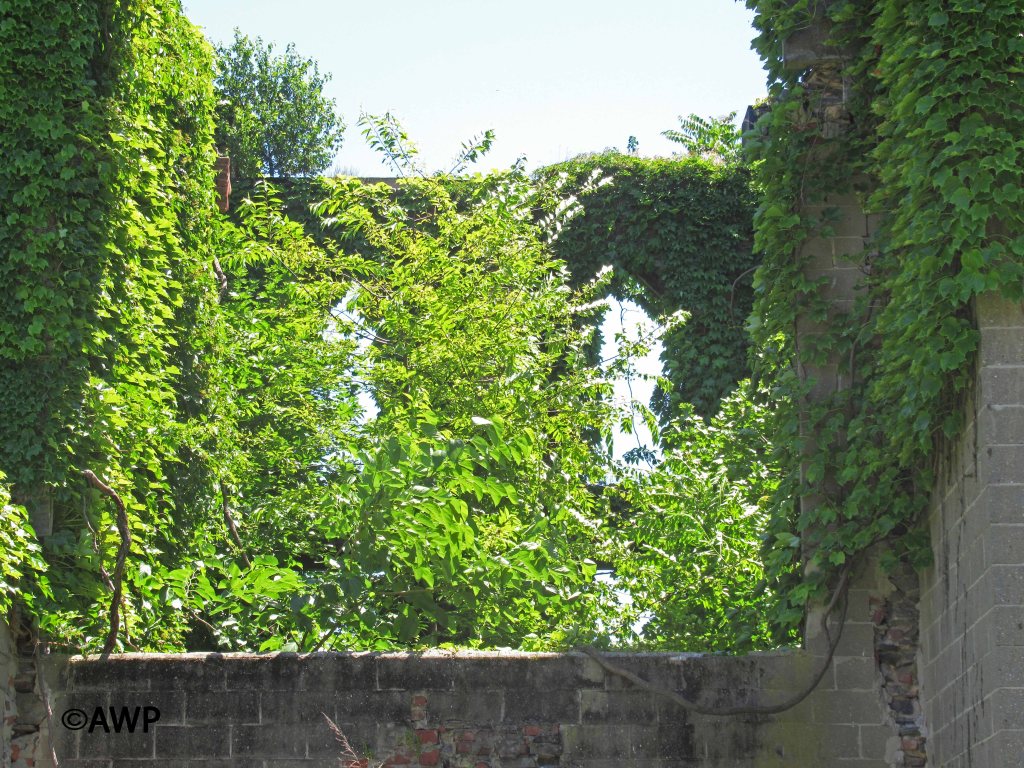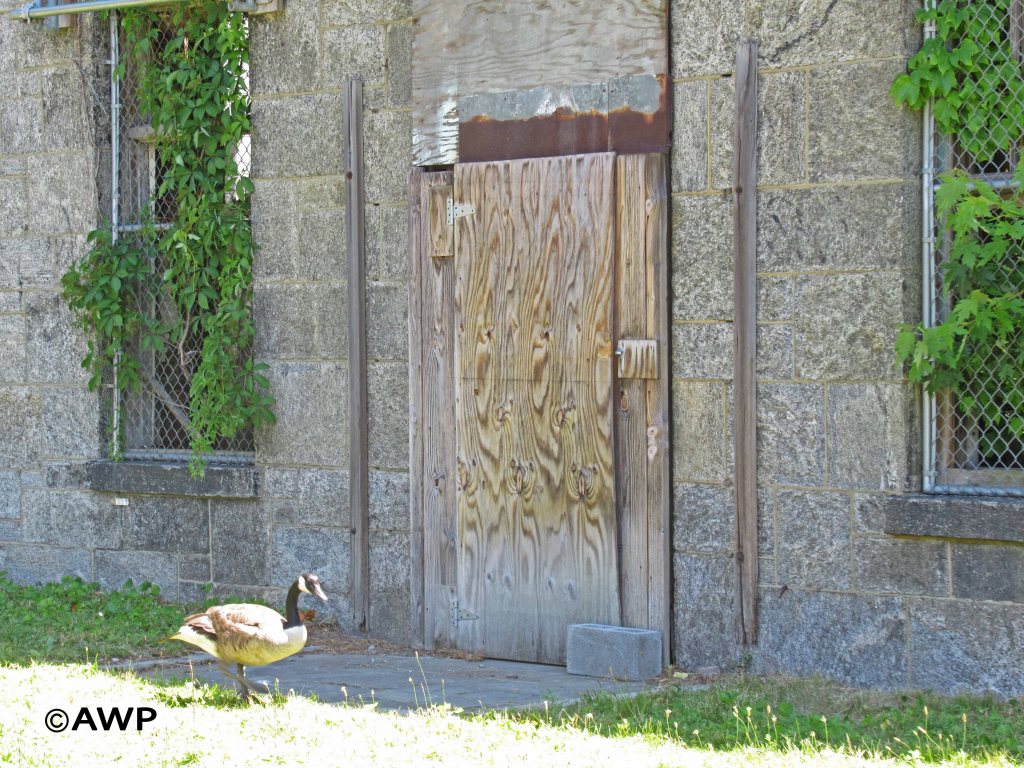Concrete Jungle Cats
The Abandoned Roosevelt Island Smallpox Hospital
Written by: Wilk
Photographs by: Lassie
Hello, New York City. It’s been a long time. Too long, in fact. And while we personally haven’t seen you since the start of the pandemic, this is your first appearance on our site. We’ve covered abandoned places in Hartford, Boston, and Philadelphia. But we’ve never done something in the City that Never Sleeps. I guess it was just a matter of time, I suppose. We just happened to be in town for the Tribeca Film Festival supporting a movie I was in. I figured, what the Hell? Let’s find something derelict to cover for the website. But the funny thing is abandoned places are actually pretty hard to come by in New York City. Especially around Manhattan. Given the property values and the high demand for space in the ever growing metropolis, abandoned places never stay that way for long. A business may go under, or a service may lose its funding, but their grounds are usually repurposed and redeveloped very quickly. Some even become tourist attractions. There were definitely a few more interesting places we could’ve covered in the city. But since we were far from home and there to promote a movie, we kind of played things a little safe this time. And besides, this is the place that spoke to us the most.



And so allow me to introduce you to this quarter’s subject: the abandoned Roosevelt Island Smallpox Hospital. Also known as the Renwick Smallpox Hospital, after its architect James Renwick Jr. It is located on Roosevelt Island, formerly known as Blackwell’s Island and Welfare Island, which is a long and narrow piece of land in the middle of New York City’s East River. The hospital was first opened in 1856. Its main purpose was to fight large outbreaks of smallpox by quarantining patients, mostly poor immigrants, in this more secluded area of the city. But this was not to last. Due to patient overcrowding, it was eventually converted into the Maternity and Charity Hospital Training School, in partnership with the nearby City Hospital. Also located on Roosevelt Island. For a few decades more, this old gothic beauty served her new purpose. But with the changing times and the island’s isolation, the facility eventually fell into disrepair and was forced to close its doors for good almost one hundred years after its opening. For years, the grounds slow succumbed to their abandonment as the buildings collapsed and wild ivy took over. The ruins reside in what is now known as Southpoint Park on Roosevelt Island.



See, if this place were anywhere else, it would just be an interesting looking ruin. Nothing more. But there are two things that set the abandoned smallpox hospital out from all other places nearby. One: it is the only still standing ruin within the city limits to be listed with the National Register of Historic Places. And two: the Wildlife Freedom Foundation. For reasons yet to be explained, Roosevelt Island has become a haven for New York’s feral cat population. Some are believed to be strays who have found their way across the river. Others are said to have been dumped there by their cruel owners who no longer want them. But whatever the reasons, there is now a small population of cats residing here. And their base of operations just happens to be the abandoned Smallpox Hospital. In 2005, a group of volunteers came together to start the Wildlife Freedom Foundation. They worked to spay, neuter, and take care of the feral cat population as best as they could. A small sanctuary has been created right outside the hospital grounds where the cats are able to come and go as they please, with valiant volunteers providing them with food and shelter. They even adopt out cats that have been successfully rehabilitated.



Since Roosevelt Island is, in fact, an island, there are only a few ways to get to it. There is a bridge for vehicles coming in from Queens. There is a single Subway stop. There is the NYC Ferry System. And there is the historic Roosevelt Island Tram, which carries visitors across the East River in big red gondolas. We, of course, chose the tram. Unfortunately, one of us is afraid of heights. I’ll give you a hint: it’s not me. Luckily Lassie was a real trooper going across the whole five minute ride. The abandoned smallpox hospital resides on the southern side of the island. Though the island provides a free shuttle service, we decided to make the trek to the abandoned hospital on foot. After a short walk, we eventually came upon the ruins. The ornate stone structure still retains its strong gothic feel, even whilst covered head to toe in ivy. It is also almost completely sealed in with chain link fencing. Almost, that is. Inside, the floors are all gone. Certain doorways and windows have been boarded up with archaic plywood. The bright summer sun pours in through the roof like a joyful flood. There’s not too much to see here. But what is there to see is really quite interesting. Especially with the bright Manhattan skyline as a backdrop.



It didn’t take long for us to see the first wild cat. Though they are very difficult to photograph, they are easy to spot. They dart in and amongst the underbrush near and within the grounds of the abandoned hospital. After finishing up with our investigation, we stopped over at the nearby Roosevelt Island Cat Sanctuary. Though the volunteers were quite busy, they did graciously let us in to meet the cats and tell us a little more about their program. They currently have over twenty cats under their care, though we were told the cats spend most of their time within the abandoned hospital “doing their investigations.” And it turns out, the cats aren’t the only guests of the Wildlife Freedom Foundation currently residing on the island. A large congregation of Canadian Geese, many of whom had injuries, were nesting in and around the grounds. The shelter volunteers also proudly told us that they will soon be taking in two baby opossums for rehabilitation. It warms my heart to see a place like this nestles amongst one of the biggest cities in the world. It just goes to show that you may be able to take the cat out of the jungle. But you can never take the jungle out of the cat. Even if that jungle is made of concrete.
If you are interested in volunteering for, donating to, or adopting from the Wildlife Freedom Foundation, please do check out their official website here – https://www.wildlifefreedomfoundation.org/
